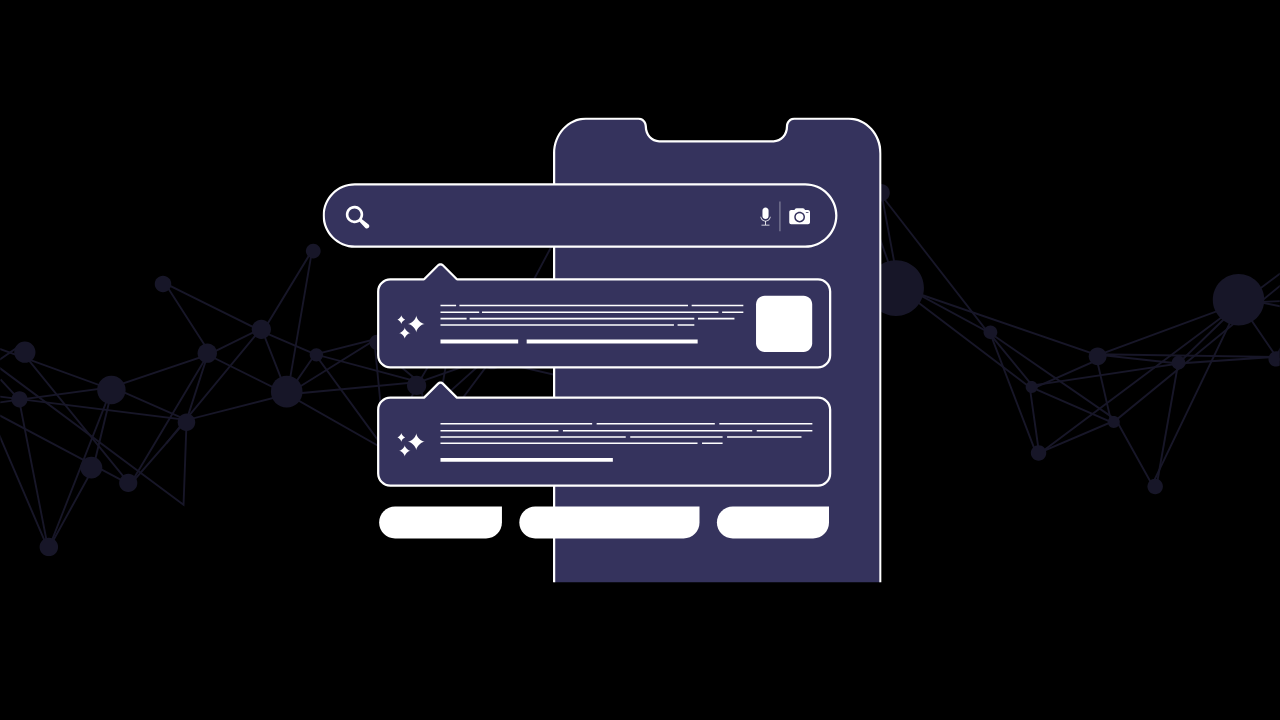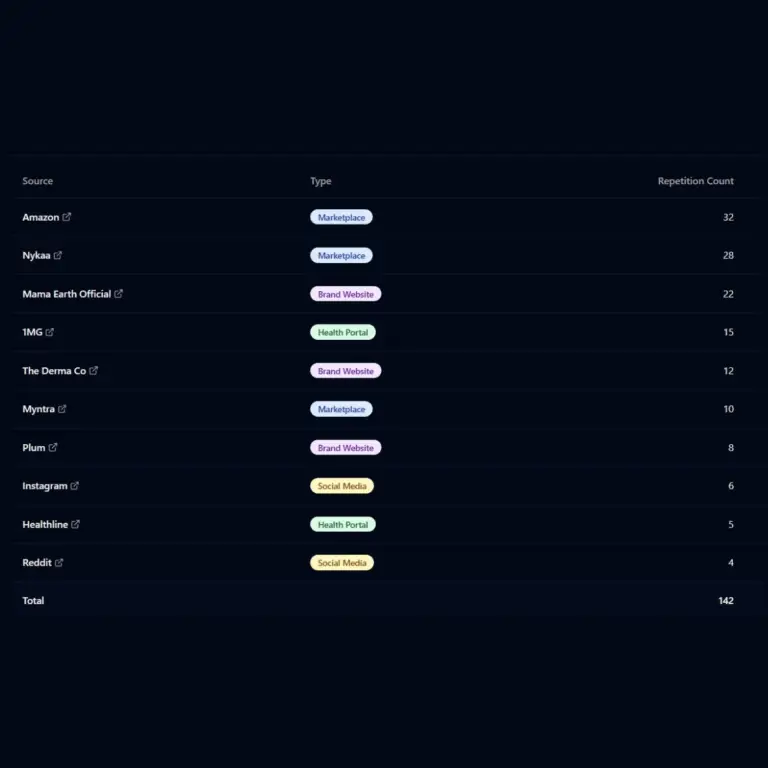
Founder, visble.ai

Did you know that 80% of consumers now rely on zero-click AI results for at least 40% of their searches? This means that they get their answers without ever clicking a link.
Over 68% of all online experiences still begin with a search, but what users consider a search engine is rapidly evolving.
Marketers relied on traditional SEO to climb the ranks of Google’s SERPs for years. However, that strategy is becoming rapidly outdated in 2025. Here comes the Generative Engine Optimization (GEO).
Curious about how GEO differs from the traditional SEO that you’re familiar with? Let’s explore how to help you future-proof your strategy for what’s next!
Traditional SEO has long been the backbone of organic visibility. Marketers have used it to climb higher for years in search engine results pages (SERPs) by improving two key things.
Traditional SEO is built on the principles set by Google’s algorithms, especially PageRank. It measures the quality & quantity of links pointing to a webpage.
Google & other search engines over time, have introduced hundreds of additional ranking signals, but the goal has remained the same. To serve the most relevant & trustworthy results to users.
This led marketers to focus on a few foundational pillars:
Keyword optimization
Making sure the right phrases appear in titles, headings & throughout content.
Backlinking
Earning links from credible sources to build domain authority.
Technical SEO
Improving website speed, ensuring mobile compatibility & maintaining clean site architecture so search engines can easily crawl as well as index pages.
Traditional SEO helps websites rank higher & attract organic traffic when done well. It’s a playbook that’s delivered results for over two decades. But as the digital landscape evolves, relying solely on traditional SEO may no longer be enough.
Most users rarely go beyond the first page of results in traditional search. But AI-powered tools like ChatGPT, Gemini & Perplexity are changing that behavior entirely.
ChatGPT cites webpages ranked in traditional search positions 21 or below nearly 90% of the time.
That’s where Generative Engine Optimization (GEO) comes into play.
GEO methods are used to influence AI-generated responses by creating strong, authoritative content that’s not just relevant, but trusted & contextually rich enough to be included in real-time answers.
The goal is to make your brand’s content appear within the responses and citations by Chat GPT, Perplexity, and other AI search engines.
You’ve most likely become an expert in search engine optimisation (SEO), as it has been the gold standard for digital marketing for over a decade. However, Generative Engine Optimization (GEO) is changing this. So what’s different? Let’s explore the key differences between SEO & GEO!
Fundamental Difference in SEO and GEO
Aspect | SEO | GEO |
Main Goal | Get your website to rank high on Google or Bing search results. | Be cited or referenced in AI-generated answers from tools like ChatGPT or Perplexity. |
Core Focus | Optimize for keywords, backlinks & meta tags. | It uses clear language, authoritative sources, as well as matches user intent. |
Platforms | Works best on traditional search engines, such as Google & Bing. | AI tools like ChatGPT, Gemini, Perplexity & Google’s AI Overviews that summarize information. |
Success Metrics | Focuses on rankings, click-through rates, impressions, as well as traffic. | Tracks citations in AI responses, visibility in chats & content engagement. |
User Journey | You try to get people to your site to explore, buy, or read more. | You deliver value instantly in the AI’s answer, sometimes without a single click. |
Citation Style | The list of links is in order of relevance and quality of the content. | Direct answers to the user’s prompt & citation links mentioned as the reference. |
Link Building | Still a critical factor, strong backlinks help boost rankings. | Links can be helpful, but they’re not the top priority. Clarity & structure matter more. |
Let’s have a quick look at the differences in metrics of SEO & GEO!
Metric | SEO | GEO |
Traffic Source | It measures the number of people clicking from Google search results to your website. | It focuses on how often your content/brand is cited or recommended in AI-generated answers. |
Outcome Focus | Keyword rankings on Google Search results | Visibility & usage in AI answers |
Key Potential Indicators | Backlinks, Authority, rankings | Source Mentions, Recommendation Scores, Brand Mentions |
Content Format | Long-form Blog posts, pillar pages, optimized meta titles/descriptions | Structured content (FAQs, how-tos), schema markup, semantic clarity, UGC, Reviews |

Building a strong content strategy for SEO isn’t the same as crafting one for GEO. SEO is all about rankings & clicks, while GEO focuses on earning a place in AI-generated answers.
Here’s a quick comparison of how the strategy shifts.
Aspect | SEO Strategy Building | GEO Strategy Building |
Goal | Drive organic traffic by ranking high on search engines. | Gain visibility & trust in AI-generated answers and tools. |
Keyword Focus | Research & target specific keywords as well as phrases that users type in. | Identify key concepts & entities that AI systems recognize or prefer. |
Content Approach | Create detailed, optimized content around target keywords. | Develop concise, clear, structured content that AI can easily parse. |
Technical Setup | Optimize site speed, mobile-friendliness, backlinks & metadata. | Implement structured data, schema markup & AI-friendly files like llm.txt. |
User Intent | Align content with user search intent & queries. | Anticipate AI question patterns & align content to answer them precisely. |
Performance Tracking | Google Analytics & Search Console for traffic as well as rankings. | Monitor AI visibility through AI answer tracking tools as well as mention analysis. |
Content Updates | Regularly refresh content based on keyword trends & rankings. | Continuously optimize content structure & data to improve AI relevancy. |
Competitive Analysis | Analyze competitors’ backlink profiles & keyword strategies. | Analyze the types of content AI systems consistently surface & model your strategy around high-authority, frequently cited sources. |
Engagement Strategy | Increasing click-through rates & lowering bounce rates. | Ensuring content is authoritative & cited in AI responses. |
Optimization Tactic | Keywords, backlinks, technical SEO | Clarity, context depth, entity-based optimization |
Data Structure | It focuses on technical elements, such as XML sitemaps, mobile responsiveness & page speed optimization. | It emphasizes structured data (schema.org), clearly labeled content sections, Q&A blocks & AI-specific signals like llm.txt to enhance discoverability by language models. |
Search Intent Alignment | Understanding & matching what the user is actively searching for in traditional search engines. | Anticipating the types of queries that prompt AI tools to surface or reference your content in generated responses. |
Long-term Focus | Build domain authority & sustained search presence. | Establish thought leadership & become a go-to AI reference source. |
Here are some key GEO metrics that marketers should track.
Brand Visibility | How often does your brand show up in prompts related to your niche |
Source Mentions | The number of times AI tools directly cite your website. |
Brand Mentions | How frequently your brand is mentioned across other cited sources. |
Top Sources | Shows which websites AI tools pull from most often in your industry. |
Average Ranking | Measures how early your brand appears in AI-generated answers. |
Search is changing at a rapid pace, so should your strategy. Visibility is shifting from ranked links to cited content within AI responses, driven by the rise of AI-powered engines.
That’s where Generative Engine Optimization is all about creating content that’s trustworthy & structured in a way AI can cite.
Generative Engine Optimization isn’t replacing SEO but enhancing it. By combining SEO & GEO, you’re not just optimizing for clicks. Instead, you’re building a brand that shows up in conversations, not just search results.
Ignoring one may risk falling behind. Master both to become the brand everyone sees as well as trusts across platforms & AI tools.
It’s not about choosing SEO or GEO in 2025. It’s about integrating both to lead the conversation.